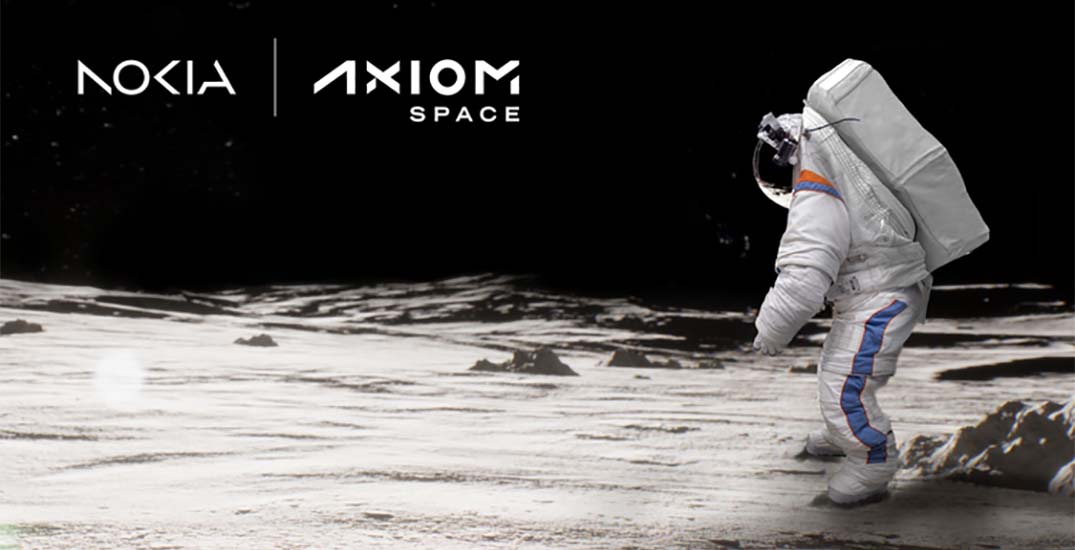Nokia has partnered with Axiom Space to integrate advanced 4G/LTE communication capabilities into the next-generation spacesuits that will be used for the Artemis III lunar mission.
Together, Nokia and Axiom Space will incorporate high-speed cellular-network capabilities in the Axiom Extravehicular Mobility Unit (AxEMU), supporting HD video, telemetry data and voice transmission over multiple kilometres on the Moon.
This advancement will enable Artemis III crewmembers to capture real-time video and communicate with mission controllers on Earth while they explore the lunar surface.
Russell Ralston, Axiom Space executive vice-president of extravehicular activity, says: “Axiom Space is excited to work with Nokia to build on the advanced capabilities of our next-generation spacesuit. Adding high-speed 4G/LTE network capability on the Moon will serve as a vital bridge linking astronauts to Earth, facilitating crucial data exchange, and enabling high-definition video communication over long distances.”
Nokia plans to deploy the first cellular network on the Moon as part of Intuitive Machines’ IM-2 mission, which is scheduled to be delivered to the launch site in 2024. During that mission, Nokia aims to demonstrate that cellular connectivity can facilitate crucial communications during future lunar or Mars missions.
Nokia’s Lunar Surface Communications System (LSCS), pioneered by Nokia Bell Labs’ research and innovation, will be deployed during IM-2 and will be further adapted for use in the AxEMU spacesuit.
Thierry Klein, president of Bell Labs Solutions Research at Nokia, comments: “Just as astronauts will need life support, shelter and food, they will need advanced networks to communicate with each other and go about their crucial work. Bell Labs has a long history of working on space projects, and Nokia is a leader in designing and building networks that connect the world.
“We are taking advantage of the same standards-based technologies that connect billions of devices on Earth every day, while bringing new innovation and technologies to bear on the specific challenges encountered in space.”
The fully autonomous LSCS has two components: a network-in-a-box combines the radio, base station and core network elements of a terrestrial cellular network into a single unit, and device modules that will be integrated into the AxEMU spacesuits.
Both the network and device modules have been carefully engineered to withstand the extreme environmental conditions on the lunar surface and the dynamic stress of spaceflight, and have been optimized for size, weight and power consumption.
Axiom Space’s spacesuits will provide astronauts with advanced capabilities for space exploration while providing NASA with commercially developed human systems needed to access, live, and work on and around the Moon.

